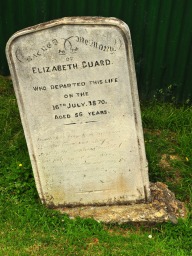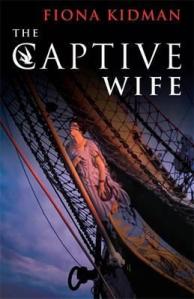Fiona Kidman is a New Zealand novelist, poet and script writer, whose most recent novel The Infinite Air a novel of the life of the aviator Jean Batten, I reviewed earlier this year.
Gallic Books and Aardvark Bureau
Although she has published over 20 books, she is relatively little known outside Australia and New Zealand, however recently her novels have begun to be published in the UK by Gallic Books, who translate a number of excellent French authors into English, and now with their new imprint Aardvark Bureau, are bringing novels originally written in English, but from countries outside the UK and US, their aim to bring an eclectic selection of the best writing from around the world.
One of my favourite reads from 2015 was the Aardvark published novel The Life and Loves of Lena Gaunt by Tracy Farr and in early 2017, they will publish Fiona Kidman’s novel Songs From the Violet Café.
The Captive Wife isn’t a recent novel, just one I had on the shelf, it was originally published in 2005 and I was reminded of it after reading Jeremy Gavron’s memoir, A Woman on the Edge of Time, as his mother, who is the subject of his memoir, also wrote a book called The Captive Wife, though quite a different volume to Fiona Kidman’s.
Review
The Captive Wife is set in the 1830’s, spanning ten years from 1832 -1843 and is based around the lives of two women, one the young Betty Guard and the other her school teacher Adeline Malcolm, whom Betty takes as her confidant, to share what exactly happened to her and her children, when they were taken captive on the shores of New Zealand, during one of their frequent visits.
In narrating her story, we come to know the circumstances of these women and their men and how they came to be living in Sydney, where much of the story is based. The man Betty is betrothed to Captain John (Jacky) Guard, arrived on one of the convict transport ships, a petty criminal, but one whose fortunes have changed as he gets involved in seafaring and whaling.
Miss Malcolm had been a teacher and is now a governess to two children, her situation somewhat precarious since the death of her mistress and her employer’s disapproval of her connection with the so-called captive wife, Betty Guard, whom rumour has it, was not as captive as many would have them believe.
 Jacky Guard takes Betty to New Zealand as his wife and they set up home in a bay that is handy for their whaling activities and where it is easy to trade with the native Maori population. Jacky trades with, though doesn’t trust the Maori Rangatira (chief), Te Rauparaha. He is able to negotiate with him, but fears he may have disrespected some of their taboo beliefs. There are constant challenges to their attempt to settle on this land, each time they return to Sydney, their home and belongings are often burned on their return.
Jacky Guard takes Betty to New Zealand as his wife and they set up home in a bay that is handy for their whaling activities and where it is easy to trade with the native Maori population. Jacky trades with, though doesn’t trust the Maori Rangatira (chief), Te Rauparaha. He is able to negotiate with him, but fears he may have disrespected some of their taboo beliefs. There are constant challenges to their attempt to settle on this land, each time they return to Sydney, their home and belongings are often burned on their return.
Sometimes the whalers invade the villages and fraternise or do worse with the local women and it is through one of these misunderstandings that their lives come under threat and the young Betty is taken captive with her two children.
The novel is based on real events and is compellingly told, as two cultures clash and one way of life is gradually imposed upon another, although the perspective is more oriented towards the colonists, as much of the narrative is told through entries in Jacky Guard’s journal and in the oral narrative of his wife to her ex school teacher.
It is only through Betty’s eyes that we see and experience something of the Maori way of life and their reaction to the arrival of these whalers and traders and the devastation they introduce with what they bring. Betty stays long enough with the tribe to begin to see the value in their ways and it is this sympathy that is subsequently seen as suspicious, as a betrayal not just to her so-called husband, but to the colonial masters.
Betty’s experiences are those of a young woman, though it is as if she has lived much more than her years. Her story is told to Miss Malcolm, who though much older is as much a captive herself, in her spinsterhood and in her inability to communicate her own hidden desire, which Betty’s story forces her to confront.
 Elizabeth Parker, the Real Betty Guard
Elizabeth Parker, the Real Betty Guard
In real life Betty Guard (born Elizabeth Parker in Parramatta, Sydney) made her first voyage with Captain Jacky Guard when she was either 12 or 15 years old, and he 23 years older than her. She is said to have been the first woman of European descent to settle in the South Island of New Zealand and her son John, the first Pakeha child born in the South Island.
She and her family were captured at one point, her husband released with orders to return with a ransom. Her ordeal was later described in a somewhat lurid report in the Sydney Herald of 17 November 1834. It was four months before a rescue mission was dispatched to bring them back. She and her family eventually settled in Kakapo Bay, where she is buried and where some of their descendants continue to live today.
The Captive Wife is an intriguing story and although a part of me wishes someone would write a novel from the perspective of the indigenous people, at least this gives us an alternative insight, by giving a significant portion of the narrative to the women who lived through these times, rather than referring to them in the footnotes, as was normally the case, as ‘the woman’.
Dame Fiona Kidman
Fiona Kidman in an interview with Kelly Ana Morey of ANZL, the Academy of New Zealand Literature had this to say about communicating with her characters, during the writing process:
I tend to live inside my characters for a long time when I’m thinking about a book. They go with me wherever I go, and sit beside me in the car. This is true, I’m talking to them all the time. And what is happening is that for the most part I’m thinking about how I would have responded to their situations had I been in them.
This was particularly true of Betty Guard, about whom very little was known – and I take some credit for uncovering her true origins and giving her to her descendants – generally, in historical references she was a footnote and referred to as ‘the woman’. I loved giving her a full-blooded persona and thinking myself into the pa sites where she was taken, and discovering both captivity and a wild freedom of the self.
Buy a book by Fiona Kidman

Kakapo Bay





I am so pleased to see this review. I read this novel long before I started my blog and admired it greatly. I am glad to see that it resonates on the other side of the world, and will refer people to this review whenever I’m recommending the book.
I think it’s a very clever title, playing on different meanings of the word captive. Betty transitions from captive in the obvious meaning of the word to someone who is captive to the attitudes and values of two societies. However, I take your point about wanting an indigenous perspective on this episode from NZ history. I don’t know if you can get hold of it on your side of the world, but it’s well worth reading Finding Eliza by indigenous Australian author Larissa Behrendt where she explores how captivity narratives were sensationalised by colonial storytellers, see my review at https://anzlitlovers.com/2016/10/10/finding-eliza-power-and-colonial-storytelling-by-larissa-behrendt/
LikeLiked by 3 people
I have a copy of Songs From the Violet Cafe but have been a little put off by both blurb and jacket. Your review of this one makes me think that it might be less fluffy than it appears.
LikeLike
Oh no, Dame Fiona Judith Kidman, OBE doesn’t write fluff! I didn’t write out her full title, as that can appear like fluff, however both she and her work are highly regarded down under. I’m sure Gallic Books have chosen this one to publish for good reasons, I’m looking forward to it anyway, sounds like it has quite a cast of characters.
LikeLike
Thank you, Claire. I’ve retrieved it from the ‘maybe on its way to the charity shop’ pile!
LikeLike
I’m intrigued as to why they selected this title, especially as she has a new novel out in 2016, though it may be about ‘universal appeal’. We shall see.
LikeLiked by 1 person
Author and her books are new to me – never heard of her before and not quite sure if for me. But like idea behind the Aardvark Bureau imprint so will check that out.
LikeLiked by 1 person
She’s probably one of the most highly regarded and long lasting authors in NZ, although I hadn’t read her work until Gallic starting republishing her, I don’t read a lot of NZ literature, but her historical fiction has some good storytelling, though not books where I highlight passages of poetic writing, which is the sort that really rocks my reading boat, as you know.
LikeLike
I am definitely going to read that book. It sounds fascinating.
Happy new year!
Judy
LikeLike
Pingback: Songs From the Violet Café by Fiona Kidman – Word by Word
Pingback: This Mortal Boy by Fiona Kidman – Word by Word